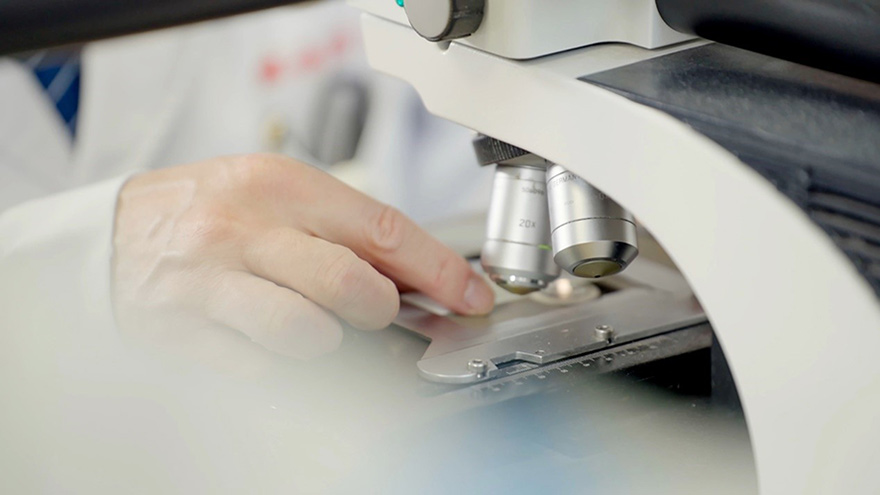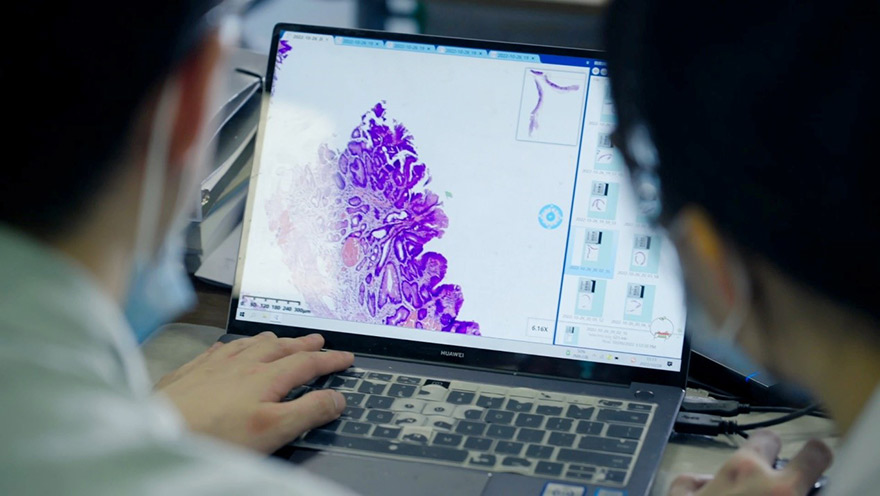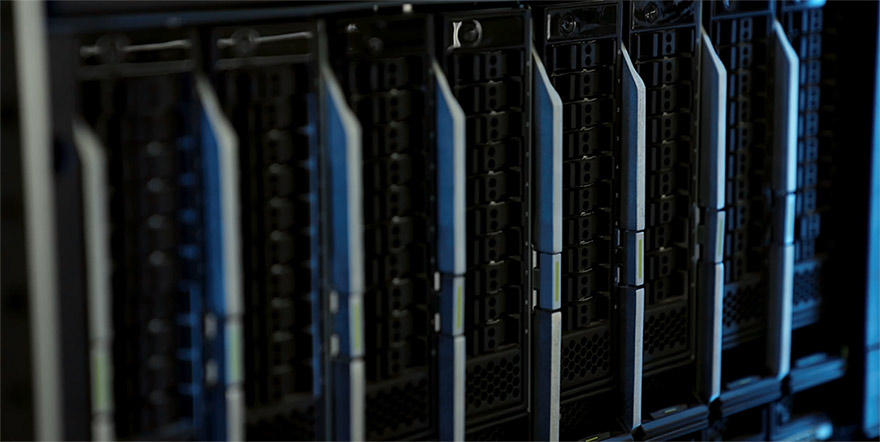Southwest Hospital: The Microscopic World of Pathology Made Clearer with Digital Technology
This site uses cookies. By continuing to browse the site you are agreeing to our use of cookies. Read our privacy policy>
![]()
Enterprise products, solutions & services
If you've read Arthur Haley's novel The Final Diagnosis, you might already be familiar: there is a type of doctor in a hospital that you seldom see, but "few departments of a hospital have more effect on a patient's welfare" than they do.
This line is referring to the pathologist.
Pathology is the study of disease in humans. It covers their causes, mechanisms, structures, and changes. It underpins diagnosis and treatment and is essential to a patient's support and care. Pathologists remain critical to research and advancing medicine today.
In the diagnosis of tumors, pathology is the most crucial step. Surgeons rely on technologies like X-rays, MRIs, and CT scans on top of their experience to locate and assess tumors.
However, only pathologists can really determine if a tumor is benign, where the primary lesion is, how much tissue needs to be removed, and if radiotherapy is necessary. All of these decisions rely on pathologists examining tissue samples and providing a conclusive diagnosis, which is documented in a pathology report. This report holds immense significance, sometimes a life-changing verdict.
Pathology not only connects science and medicine but can also make the difference between life and death.

Seeking Truth in the Micro World
Work in pathology can often be complex. It involves sampling and embedding living tissues from patients, preparing slides, staining, and ultimately analyzing samples to come to a diagnosis, all done meticulously.
In the midst of the overwhelming task that could directly impact a patients' life and health, every cut must be precise, every slice scrupulously examined, and every piece of evidence irrefutable.
Southwest Hospital in Chongqing, China, has been a trailblazer in the field of pathology, having dedicated years to its exploration and advancement.

"Pathology is the foundation of medicine. Without pathology, there would be no modern medicine," said Mr. Bian Xiuwu, Director of the pathology department at Southwest Hospital and the only academician of the Chinese Academy of Sciences in the field of pathology in China. "Our work in pathology has been like navigating in the dark, where every detail must be explained — what's on both sides of the road and what's ahead."
The pathology department at Southwest Hospital has grown into one of the best in China, diagnosing over 100,000 cases per annum after 80 years of development. It was also the first hospital in China to provide clinical pathology education and research, producing skilled professionals for the field.
Despite its significance, the department is currently experiencing certain challenges.
To begin with, diagnosing illness is not immune to human error. Recent studies indicate that different pathologists examining the same slide under a microscope can have significant variations in their interpretation due to factors such as equipment, lighting, and fatigue. This poses a serious risk considering the ever-growing pressure placed on pathological examination services.
Moreover, the storage and management of physical slides is problematic. These slides accumulate over a retention period of 35 to 40 years and are prone to fading. The traditional method of using handwritten labels makes it nearly impossible to trace and query, severely limiting sample tracking and clinical research.
On top of this, medical resources are bound by location and not easily shared. Resources are not distributed evenly, and most grassroots hospitals in cities lack efficient and convenient remote diagnosis and treatment capabilities. In the past, patients would be left waiting on the operating table as the diseased tissue sample was rushed to the hospital for medical examination by a special car. The surgical plan could only be decided after the sample arrived. This process would take at least an hour or two, which was a huge delay.
Traditional pathology departments, therefore, are in urgent need of a digital and intelligent transformation.

Academician Bian Xiuwu dreams of a future in pathology where knowledge is digitized and standardized. "I envision a day when pathologists can diagnose diseases from anywhere, be it at home, on a plane, or during a ride on the high-speed train. By comparing digital pathology scans with diseases worldwide, we might be able to achieve near-perfect diagnoses."
Today, this dream is becoming a reality. With the help of Huawei's OceanStor Pacific scale-out storage, Southwest Hospital has taken a bold step forward by building a fully digital pathology department. Pathological scans can be accessed in a digital slice format, so that all diagnoses can be completed on a screen.
Intelligent technology is making a difference in the microcosm of pathology, aiding in its development and providing assurance for the health and well-being of patients. With technological advancements filling the gap, the industry is set to make further progress.
Digital Pathology: Robust Infrastructure for a Fully Intelligent Transformation
The level of digitalization and intelligence in the pathology department has always been a determining factor of a hospital's future development, but it is not without its trials.
A digital pathology file can be as large as 3 GB, which is over 10 times the size of the usual PACS image. To put this in perspective, a small slice the size of a fingernail is almost equivalent to a high-definition movie.
According to Academician Bian, Southwest Hospital produces over 2000 slices every day, adding up to 800,000 slices annually, with each slice containing at least 2 GB of data. And this figure keeps increasing at a rate of 20% each year. Managing such a massive amount of data is an enormous hurdle the hospital must surmount.
Such a large volume of data is significantly slowing down the speed doctors can access the slices. They must spend at least half a minute opening a digital slice file and often encounter issues with mosaic and lagging when switching and loading, leaving them frustrated. Traditional data storage systems are also struggling to keep up with the load. The vast amount of valuable pathology data poses an immense burden on archiving space and remote sharing, hindering the construction of equipment rooms and efforts to make medical resources available at grassroots levels.
To decipher the intricate codes of pathology, Southwest Hospital needs a robust data storage system. Thanks to Huawei's assistance, the hospital has managed to leap many a hurdle.

Huawei OceanStor Pacific scale-out storage is designed with the field of pathology in mind. It has been optimized and adapted to ensure the efficient reading and writing of pathology data, and provides powerful throughput performance for hybrid workloads. Testing has shown that it can handle up to 400 digital slices being retrieved at the same time within just a second, without requiring any upgrades to the network or terminal devices.
In addition to its impressive speeds, Huawei's storage also boasts advanced features like the pathology file compression algorithm, high-density hardware design, intelligent tiering, and multi-protocol interworking. These capabilities have enabled the pathology department of Southwest Hospital to cut storage costs and equipment room space by 50%, streamline data lifecycle management, and facilitate remote multi-party consultations in Internet healthcare. They have also made it feasible to integrate digital pathology, PACS, DNA sequencing, and spatiotemporal molecular analysis into a single medical imaging platform.
In the digital age, the progress of pathology towards full digitization and intelligence relies on advanced data infrastructure. With each pathology file comes the problem of managing large amounts of data, and Huawei OceanStor Pacific scale-out storage is just what the doctor ordered to treat it. As Chinese pathology advances towards intelligence, it looks to a promising future.
Every step towards high-quality medical services to more people is crucial, and it is a shared dream of doctors and patients and a goal of technological advancements. Huawei's data storage technology is deeply integrated with healthcare applications, driven by compassion and innovation, and is committed to advancing medicine as a whole.
Data storage not only encompasses the vastness of the scientific world but also serves as the digital foundation for people's well-being and daily lives. The world of intelligence is now upon our doorstep.